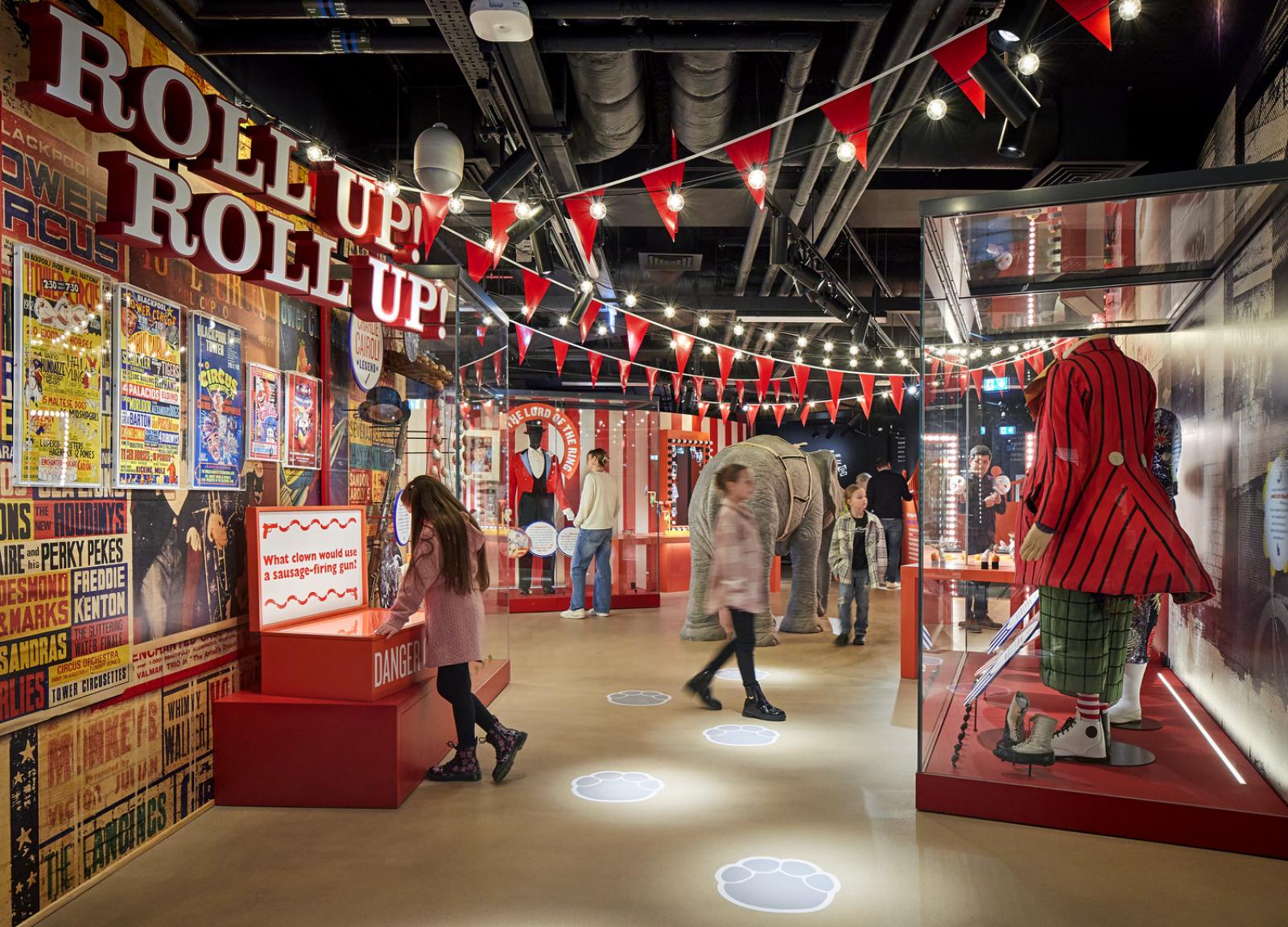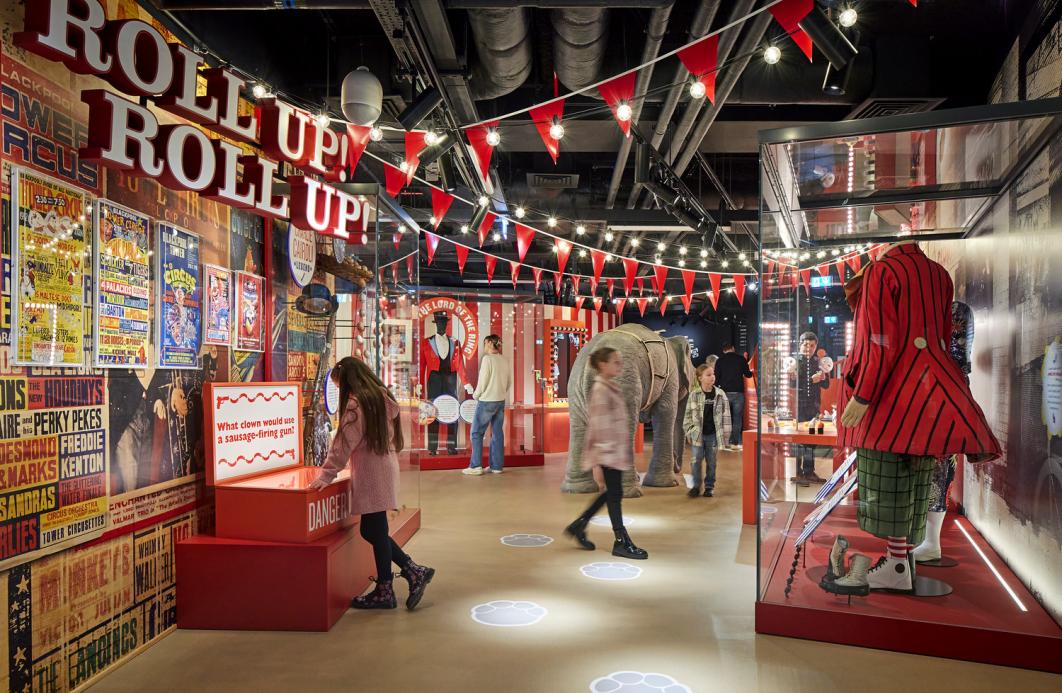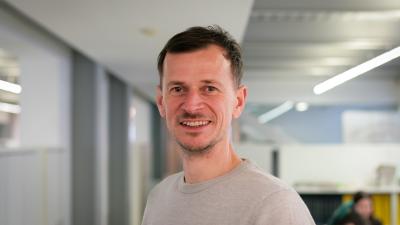
Showtown, Blackpool, is the seaside resort’s first permanent museum. The museum opened its doors earlier this year, creating a vibrant hub to celebrate all things Blackpool and the part it has played in the development of British popular culture.
Showtown is about Blackpool’s heritage – and this heritage is defined by the people who live and work there.
We played a co-ordination role in our work at Showtown, bringing pieces together to create a museum space. As well as the exhibit space, we designed and delivered the secondary spaces provided in the museum, including an education room, staff areas, temporary galleries and toilets. The design was key to creating a seamless visitor experience, ensuring that not only where the exhibits visually stunning but also easy to navigate and accessible for all.
Every part of the museum has been thought out and designed with accessibility in mind. The design was based on Low Physical Effort design – a hallmark of inclusivity and universal design principles.
Low Physical Effort design principles include facilities and design plan characteristics that make physical access on-site easy and of minimal effort.
We worked closely with an accessibility group to ensure that we were being as immersed in the conversation as possible. Prioritising the accessibility group as active and key stakeholders meant that we could look beyond everyday accessibility in architecture and include usually overlooked features.


Exhibition Space
The exhibition space, as the main feature of Showtown, had to be truly accessible. A priority was to create wide pathways and open areas around the exhibition areas. The space around exhibits accounts for wheelchair accessibility, and mobility aids and also allows room for caregivers to assist without causing congestion.


Seating
The seating of Showtown is designed to integrate into the exhibits, matching the themes of the museum. It's all strategically placed around Showtown for those needing time to sit down and rest. A mixture of fixed and movable seating provides a flexibility in use of space around the exhibits, meaning that if further access is needed, seating can be moved to create a wider pathway.
Seating is located at regular intervals for ease of access and positioned within exhibits to allow visitors to enjoy the displays while still seated. There is space around the seating for those in wheelchairs or other mobility aids to sit amongst them. Every seating feature also has handrails installed into the seat, no matter the design, to make it as accessible as possible.
Washrooms and 'Changing Places'
Showtown’s toilets and washroom facilities are all gender-neutral. They feature full-height cubicles, offering privacy for all users, and handwash basins of various heights to cater to the needs of those with different physical abilities and ages.
Showtown contains a Changing Places facility. When the museum was first proposed, there were only eight Changing Places facilities in Blackpool and only 1130 across the UK. A Changing Places facility is specifically designed to meet the needs of people with disabilities who require extra equipment and space. Features include a height-adjustable adult-sized changing bench; a hoist system; ample space for a wheelchair and carers; and a centrally placed toilet with room on either side for carers.
The entrance to the washrooms has been designed with accessibility in mind, following the Low Physical Effort design principles. By eliminating doors, the museum has ensured that there are no physical barriers that could hinder access for individuals using wheelchairs, walkers, or other mobility aids.
The open-plan design not only enhances accessibility but also allows for passive supervision, making it easier for caregivers to assist without obstructing movement. This promotes a seamless and inclusive experience for all visitors, aligning with Showtown’s dedication to creating a museum for everyone.
Staircase
The staircase at Showtown has created a landmark feature with its bright and instantly memorable colours. The bright pink of the stairs came first, bringing to mind the recognisable colour in a stick of Blackpool rock. After deciding on the pink, we needed to find a high-contrast colour that could match the vibrance of Showtown whilst also serving a secondary accessibility purpose.
The bright yellow handrails provide a visually obvious aid for those who need assistance, with lower handrails also included on the stairs to accommodate children and shorter individuals. The handrails are made of a nylon-coated metal. Where normal metal is cold and can provide sensory issues, the handrail is warmer to the touch.

Quiet spaces
A museum centred around entertainment can be overwhelming, with lots of noise, vibrant colours, and sensory experiences. It was important to incorporate quiet spaces within the museum. These spaces cater to those who become overwhelmed in high-sensory spaces and need a calm low-stress environment.
Neal Charlton
Neal leads Buttress' arts and culture team, with a focus on the restoration, care and adaptation of historic and listed buildings.
Steve Kendall
Steve is an experienced senior architect with a history of designing and delivering buildings across a broad range of sectors.


